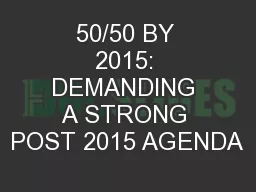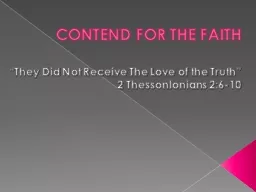PPT-Do the Strong Receive What They Can?
Author : tatiana-dople | Published Date : 2018-03-14
Explaining the Allocation of Environmental Aid Chris Marcoux The College of William and Mary Christian Peratsakis University of Texas Augmenting Available Data
Presentation Embed Code
Download Presentation
Download Presentation The PPT/PDF document "Do the Strong Receive What They Can?" is the property of its rightful owner. Permission is granted to download and print the materials on this website for personal, non-commercial use only, and to display it on your personal computer provided you do not modify the materials and that you retain all copyright notices contained in the materials. By downloading content from our website, you accept the terms of this agreement.
Do the Strong Receive What They Can?: Transcript
Download Rules Of Document
"Do the Strong Receive What They Can?"The content belongs to its owner. You may download and print it for personal use, without modification, and keep all copyright notices. By downloading, you agree to these terms.
Related Documents













![[READING BOOK]-Compiler Generators: What They Can Do, What They Might Do, and What They](https://thumbs.docslides.com/971388/reading-book-compiler-generators-what-they-can-do-what-they-might-do-and-what-they-will-probably-never-do-monographs-in-theoretical-computer-science-an-eatcs-series-19.jpg)
![[DOWLOAD]-Compiler Generators: What They Can Do, What They Might Do, and What They Will](https://thumbs.docslides.com/975939/dowload-compiler-generators-what-they-can-do-what-they-might-do-and-what-they-will-probably-never-do-monographs-in-theoretical-computer-science-an-eatcs-series-19.jpg)